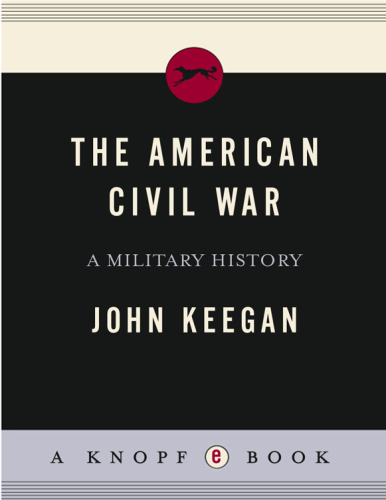
The American Civil War
کتاب های مرتبط
- اطلاعات
- نقد و بررسی
- دیدگاه کاربران
نقد و بررسی

May 25, 2009
American scholars tend to write the Civil War as a great national epic, but Keegan (The First World War
), an Englishman with a matchless knowledge of comparative military history, approaches it as a choice specimen with fascinating oddities. His more thematic treatment has its shortcomings—his campaign and battle narratives can be cursory and ill-paced—but it pays off in far-ranging discussions of broader features: the North's strategic challenge in trying to subdue a vast Confederacy ringed by formidable natural obstacles and lacking in significant military targets; the importance of generalship; the unusual frequency of bloody yet indecisive battles; and the fierceness with which soldiers fought their countrymen for largely ideological motives. Keegan soars above the conflict to delineate its contours, occasionally swooping low to expand on a telling detail or a moment of valor or pathos. Some of his thoughts, as on the unique femininity of Southern women and how the Civil War stymied socialism in America, are less than cogent. Still, Keegan's elegant prose and breadth of learning make this a stimulating, if idiosyncratic, interpretation of the war. 16 pages of photos, 12 maps.

August 15, 2009
A solid history of the Civil War by the grand master of military writing.
After two modern classics—The Face of Battle (1976) and The Price of Admiralty (1988)—Keegan has followed with numerous coffee-table books as well as fine histories of World Wars I and II and a less-successful account of the Iraq war. Here he turns his attention to America, with dependably satisfying results. Downplaying battle descriptions, the author delivers a shrewd portrait of mid-19th-century America and the background to the war. Keegan stresses big-picture issues of politics, diplomacy, strategy and daily life, so history buffs who skim the battle scenes will still have plenty of rich insights to contemplate. Though he is no revisionist, the author delivers a few jolts, including the fact that, on a per capita basis, the Confederacy was wealthier than the Union—provided slave property was included in the calculation. The Union's vaunted industrial superiority was a fact but contributed only modestly to victory; Southern troops never lacked arms and ammunition. In war, the side with the most soldiers wins unless the opponent acts with particular brilliance, a scarce quality among Confederate leaders. With most of the population and media on the East Coast, writes the author, both sides' obsession with the fighting in Virginia disguised the steady retreat of the Confederacy. Robert E. Lee's triumphs notwithstanding, the war in the East remained a stalemate until his sudden collapse in 1865. In the West, notes the author, Union armies began advancing in 1861 and continued with barely a pause.
Though James McPherson is still the preeminent Civil War historian, no reader should pass up the chance to read Keegan.
(COPYRIGHT (2009) KIRKUS REVIEWS/NIELSEN BUSINESS MEDIA, INC. ALL RIGHTS RESERVED.)

Starred review from July 1, 2009
Keegans formidable reputation as a premier military historian ensures great attention to this survey history of the Civil War. Comparable in breadth to James McPhersons Battle Cry of Freedom (1988), Keegans work roams less among the politics and social passions of the war and dwells more on the conflict as a military problem confronting the leaderships of the North and the South. Strategic geography assumes primacy in Keegans viewpoint, followed by transportation, supplies, and organization. The degrees to which these were understood and addressed animate Keegans insights, as he explains how the answers of war leaders to their military puzzlethe Union, to quell rebellion; the Confederacy, to ward off invasion and obtain diplomatic recognitionmet the exigencies of circumstances. In consequence, Keegans sense of the wars most significant (as distinct from decisive) battles strays from popular perception: not Vicksburg and Gettysburg but Wilsons Creek and Perryville. Keegan is similarly independent in his critiques of generals: schooled in Napoleonic doctrine, most were not flexible about campaign strategy or battlefield tactics (excepting Robert E. Lee, a spectacular tactician), the wars only original thinkers being Thomas Stonewall Jackson and Ulysses S. Grant. So, for the South, was the cause bound to be lost? Keegans reply of almost certainly scarcely detracts from his acuity about the wars myriad aspects, encompassing dramatic battles, appalling costs, and decisive historical results. This fascinating analytical narrative will resound with Civil War readers.(Reprinted with permission of Booklist, copyright 2009, American Library Association.)

























دیدگاه کاربران